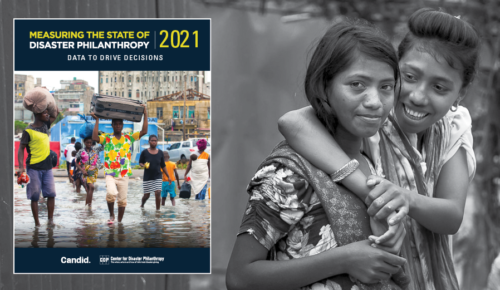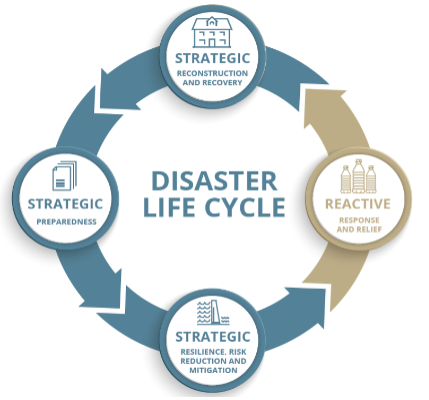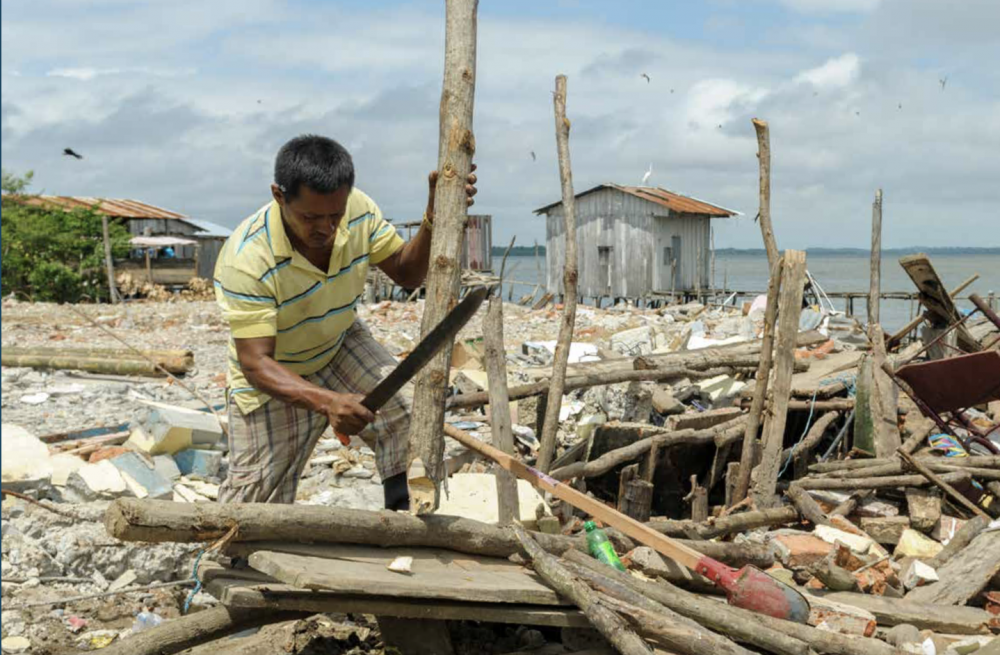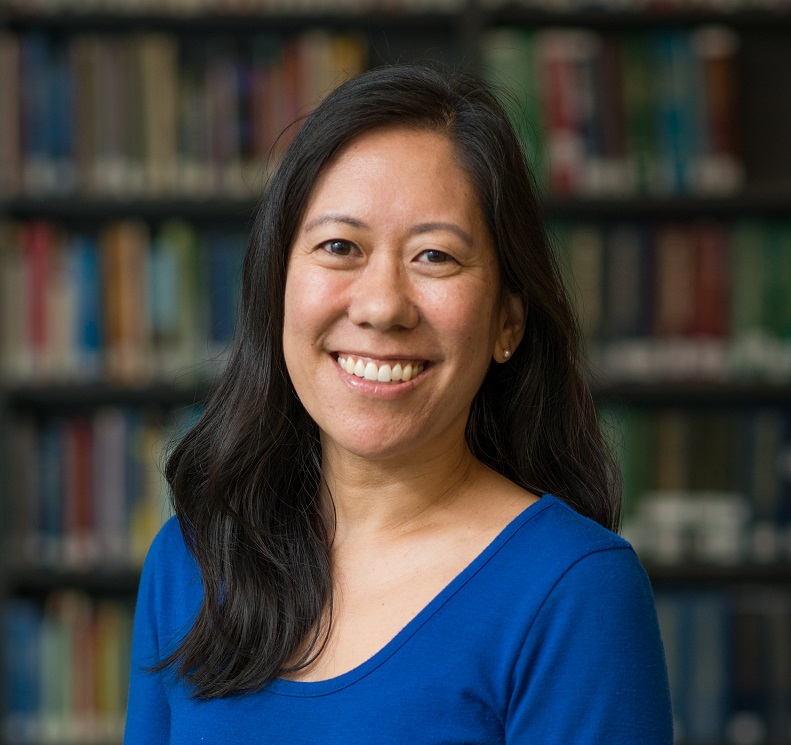Lessons from 2019 to maximize future disaster giving decisions
This blog originally appeared on Candid’s website. Earlier this month, Candid and the Center for Disaster Philanthropy (CDP) released the eighth edition of our annual Measuring the State of Disaster Philanthropy report. In it, we examined available 2019 data on global disaster-related philanthropy, analyzing funding from foundations, bilateral and multilateral donors, the U.S. federal government, corporations and donations through donor-advised funds (DAFs) and online […]

This blog originally appeared on Candid’s website.
Earlier this month, Candid and the Center for Disaster Philanthropy (CDP) released the eighth edition of our annual Measuring the State of Disaster Philanthropy report. In it, we examined available 2019 data on global disaster-related philanthropy, analyzing funding from foundations, bilateral and multilateral donors, the U.S. federal government, corporations and donations through donor-advised funds (DAFs) and online platforms.
Drawing upon 12 data sources, the report documented $30 billion in private, public, corporate and individual disaster-related giving to address major disasters and humanitarian crises that affected millions globally in 2019. We invite you to dive into key findings from the report and explore granular data on our funding map.
In this blog post, we highlight a new section of the report, which offers specific, actionable takeaways for how donors can maximize their disaster-related giving.
Philanthropy plays a crucial role in helping communities prepare for and respond to global disasters and supports the long-term recovery that individuals and communities face after disasters. CDP has several recommendations to help funders maximize their philanthropic impact. We’ve included their recommendations below, along with examples from the 2019 analysis of donors who use these tactics.
Support underfunded areas of the disaster lifecycle. The majority of disaster funding supports response and relief efforts, while a smaller percentage each goes toward preparedness, mitigation and risk reduction, and reconstruction and recovery. This has been a dominant trend in the past eight years of our analysis. We understand the instinct to donate in the immediate aftermath of a disaster, and it’s essential to address urgent needs. But recovery can take years, and strategic disaster philanthropy requires taking the long view.
Putting this best practice into action, in 2019—two years after Hurricane Maria hit Puerto Rico—the Amgen Foundation awarded $257,500 to the University of Puerto Rico for rebuilding efforts.
Communities also require support prior to a catastrophic event to be prepared to withstand future disasters.
With wildfires posing an increasing threat in the U.S., the Gordon and Betty Moore Foundation awarded over $1 million to Jupiter Intelligence to support the development of a wildfire decision support system with real-time fire risk intelligence for improved early detection and assessment of wildfires.

Enable advocacy and community organizing efforts. Nonprofits need support to engage in activities that influence disaster-related policies. Disasters often expose inequities that already exist. The root causes of marginalization that are exacerbated by disasters are often mired in systems and structures that are historically racist and exploitative. Funding community organizing efforts can activate and engage residents to change those systems.
The Urgent Action Fund for Latin America and the Caribbean demonstrated this in 2019 when it awarded Articulação Nacional das Pescadoras Bahia a grant of $5,743 to strengthen women’s grassroots organizing in Brazil. These funds supported advocacy action at the state and federal levels and helped the group follow up on demands and claims due to a massive oil spill off the Brazilian Northeast coast.
Provide quick, unrestricted and flexible multi-year financial support. Nonprofits responding to a disaster require flexibility, time, and unrestricted funds to navigate emerging challenges and changes.
To meet this need, the Margaret A. Cargill Foundation awarded several multi-year disaster grants in 2019. This included a 73-month, $850,000 grant to CARE, a global relief organization, to provide “assistance and robust response readiness” for low-attention natural disasters.
Admittedly, it can be difficult for Candid to accurately capture unrestricted disaster-related funding. We see examples of general support to disaster-serving organizations, but to identify disaster funding to organizations that do not specialize in disaster work, we rely on information found in grant descriptions. It is rare for a description to identify both a specific disaster and the flexible nature of the funding (though we began to see this more recently with COVID-19 funding). In 2019, we found one example, from the Wisconsin-based Eau Claire Community Foundation to the American Red Cross, with the description: “Hurricane Dorian relief, unrestricted.”
Support local nonprofits and knowledge in the U.S. and internationally. Fund organizations that focus on Black, Indigenous, and people of color (BIPOC) communities as well as other historically marginalized populations, such as women and girls, LGBTQ+ individuals, children and youth, older adults and persons with disabilities. Local knowledge is crucial, as is trusting the expertise of affected communities. Supporting community leaders and organizations on the ground includes local hiring with fair wages, shifting power to grantee partners and listening to residents to determine program and funding priorities.
The Disability Rights Advocacy Fund did just that when it awarded $20,000 to Palau-based Omekesang. These funds helped build organizational capacity to lead the implementation of the UN Convention on the Rights of Persons with Disabilities and disability-inclusive development efforts in Palau. The grant supported outreach to marginalized groups, ensuring that Palau’s Disaster Risk Reduction Plan is inclusive of all persons with disabilities.
Report your data to Candid and ensure that grant descriptions are clear and explicit. Descriptive data improves the quality of the research and enables analysis that identifies gaps in funding and critical needs. Candid makes it easy to share your data. Your grants management system may already offer an easy export. Alternatively, you can prepare your grants information using this template. Check out our how-to guide for sharing data.
Here are some examples of 2019 grants with clear descriptions that help to identify the main objectives, beneficiaries and geographic area served:
- “To support a coordinated, community-based response to meet the health care, mental health, housing, education, economic development and related health needs of residents affected by the 2018 Camp wildfire in Butte County” ($175,000 grant from The California Endowment to the North Valley Community Foundation)
- “Awareness-raising project on the Ebola Virus Disease (EVD) and the psychosocial care for family members of EVD victims in the city of Butembo for women and young people from the two health areas of the Katwa and Butembo health districts” ($5,000 grant from Fonds pour les Femmes Congolaises to Solidarité des Associations Féminines pour les Droits de la Femme et de l’Enfant)
The world continues to address the impacts of COVID-19 while also facing an increase in extreme weather events. Now, more than ever, donors must consider how they can best maximize their disaster-related giving. Institutional disaster philanthropy may be small in comparison to government funding. However, its flexibility allows it to play an essential role in helping communities prepare for, respond to and recover from global disasters and humanitarian crises.
To learn more and to access the latest Measuring the State of Disaster Philanthropy report and funding map, visit our disaster philanthropy website.
More like this

What We Can Learn from Five Years of Mapping Disaster-Related Giving


